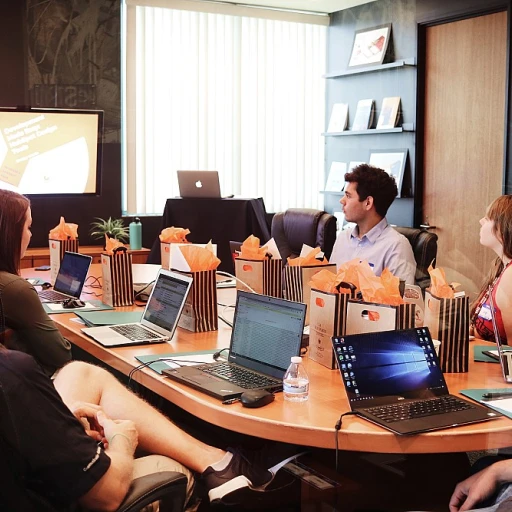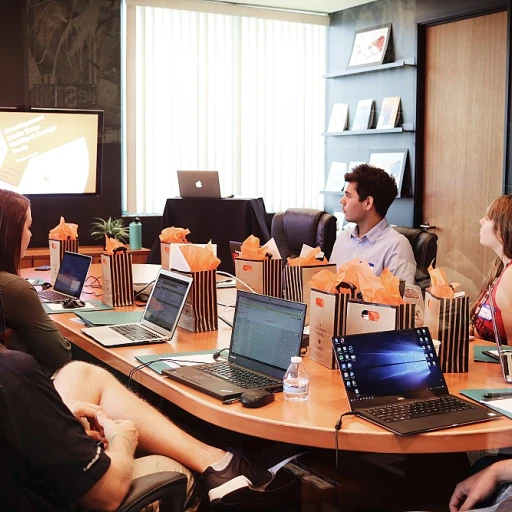
Understanding Training Cultures
Deciphering the Essence of Training Cultures
Understanding the composition of training cultures is crucial for organizations aiming to reskill their workforce effectively. Training cultures embody the values, norms, and beliefs that shape the learning and development initiatives within any company. A comprehensive grasp of this cultural backdrop paves the way for adapting training strategies that align with business goals and enhance employee growth. In well-established training cultures, there's a commitment to continuous learning and development, ensuring that employees are equipped with the skills necessary in today's rapidly changing work environment. This commitment isn't just about offering training courses but also includes nurturing a positive culture where psychological safety and open communication thrive. When employees feel safe to express ideas and feedback, the organization as a whole benefits from diverse perspectives, fostering innovation and adaptability. However, merely understanding training cultures isn't enough. Organizations must proactively identify skill gaps and tailor their training programs to bridge these gaps. By embracing change and cultivating a cross-cultural awareness, companies can ensure that their training efforts align with both organizational and market needs. An effective training culture is also characterized by its adaptability and ability to integrate technology. Leveraging digital platforms can facilitate a more personalized training development experience, thereby enhancing employee engagement and achievement. High-performing organizations often have robust learning cultures, where continuous feedback mechanisms are in place to measure effectiveness and drive improvement. To ensure the development of a thriving training culture, leaders within an organization must champion these efforts, driving a corporate culture that prioritizes reskilling. For those looking to optimize their strategies, understanding the nuances of training cultures can set the foundation for successful reskilling initiatives. For further insights, explore strategies tailored to this topic here.Identifying Skills Gaps
Pinpointing the Skills Your Team Needs
Identifying gaps in skills amidst a dynamic workplace culture can be quite the challenge for any organization. It requires a deep understanding of what skills employees possess and which ones the business needs to develop to stay competitive. In this endeavor, a company's learning culture plays a pivotal role, encouraging continuous development and adaptation. To effectively identify skills gaps, organizations can employ a combination of strategies:- Comprehensive Assessments: Conduct organizational assessments to determine current skills and benchmark them against industry standards. This involves gathering feedback from team members and leaders to pinpoint areas of improvement.
- Employee Feedback: Giving employees the opportunity to voice their needs can uncover hidden gaps. This not only reinforces a positive culture, known as psychological safety, but also promotes a sense of belonging and growth within the company culture.
Tailoring Training Programs
Customizing Educational Strategies for Skill Acquisition
Selecting the appropriate training programs can feel like navigating a labyrinth. The need for reskilling is apparent, but the approach to achieve this successfully requires tailoring the educational efforts to not only fill skills gaps but also resonate with your organization's unique culture. Comprehending various training programs varieties enables organizations to align with their own specific goals. In today's diverse workplaces, fostering a positive organizational culture is integral to training development. It begins by understanding the existing culture learning dynamics within your company. Here are some key strategies for creating tailored learning experiences:- Assess Organizational Needs: Evaluate the skills necessary for your business objectives. This involves collaboration with leadership teams to understand what proficiency is needed and determining where employees currently stand. Addressing these gaps effectively requires a solution that embodies a blend of organizational demands and employee aspirations.
- Engage with Diverse Learning Approaches: Encouraging psychological safety, allowing employees to innovate and take risks, enhances learning development. This is where cultural awareness and cultural training become crucial. Some companies might benefit from cross cultural or online person-focused courses, while others might leverage traditional classroom settings.
- Sustain Engagement through Feedback: Regular examination and feedback loops are critical as part of the training culture. Employees might engage more when they perceive that their feedback is valued and impactful. Journaling progress and achievements fosters a high performing work environment and encourages continuous development.
- Incorporate Innovative Learning Methods: Leveraging modern technology and the cultural shifts within the workplace, organizations can offer interactive and engaging programs. From enhanced leadership training to business simulations, these variations in learning formats can cater to different learning styles, thus promoting a robust culture of continuous improvement.
Leveraging Technology in Training
Integrating Technology into Reskilling Initiatives
In today's digital era, leveraging technology in reskilling efforts is pivotal for business evolution. As organizations strive to foster a dynamic learning culture, integrating technological advancements ensures that employees have access to cutting-edge tools and resources designed to enhance their skillsets. This approach not only aligns with the overarching organizational culture but also sets the stage for fostering a high performing team culture characteristic of successful companies. Incorporating online training platforms can transform traditional corporate culture, breaking down geographical barriers and enabling cross cultural training. With online courses, employees can engage in culture learning at their own pace, allowing them to absorb knowledge effectively without the pressure often associated with workplace culture shifts. Tools such as webinars, virtual reality, and augmented reality are revolutionizing cultural training by providing immersive experiences that promote cultural awareness and development. By adopting these technologies, leadership can ensure that the learning development process mirrors real-world scenarios, enhancing the practicality and applicability of training programs. Moreover, the ability to simulate cross cultural interactions through virtual platforms contributes to a more comprehensive understanding of diverse workplace cultures, ultimately strengthening team cohesion and collaboration. Employing these technological innovations requires a strategic approach to ensure alignment with the organization's goals and values. Business leaders must prioritize psychological safety within the corporate culture, fostering an environment where employees feel comfortable engaging with new learning mechanisms. Additionally, maintaining a positive culture of continual growth is vital in encouraging ongoing training development and adaptation to evolving industry trends. Furthermore, monitoring the impact of technological integration on organizational culture is crucial for long-term success. Industry journals and training providers often emphasize the importance of continuous feedback and iteration. This approach not only sustains the momentum of learning initiatives but also addresses any disparities that may arise between intended outcomes and actual results. By embracing technological advancements within reskilling strategies, companies can ensure they remain agile and competitive in an ever-changing business landscape. This integration is a testament to an organization's commitment to nurturing leadership qualities and fostering a resilient workplace culture."Measuring Training Effectiveness
Evaluating the Impact of Training Programs
In the journey towards reskilling, measuring the effectiveness of training programs is crucial for organizations to ensure they are on the right track. This process is deeply embedded in the training culture and requires a comprehensive understanding of various key metrics that reflect both individual and organizational growth.
To effectively assess the success of training courses, consider the following strategies:
- Feedback Collection: Implement regular feedback sessions with employees and leaders to gather insights on the training sessions. This feedback provides valuable information on how well the programs are resonating with employees.
- Performance Metrics: Analyze data that reflects changes in performance over time. Metrics could include productivity levels, quality of work, and the competency in newly acquired skills.
- Employee Engagement: Assess employee engagement levels by using surveys and observing participation rates during and after training sessions. A high engagement rate can indicate a positive training culture that fosters learning and development.
- Leadership Involvement: Ensure leaders are actively participating and promoting these reskilling programs. Their involvement often leads to more effective adoption and integration of a learning culture within the team environment.
- Cross-Organizational Insights: Compare results across different teams or departments to ensure consistency and identify areas needing further attention. Cross cultural insights can enhance understanding and application across diverse teams.
Training effectiveness must also consider the psychological safety within the workplace. Employees should feel comfortable providing honest feedback without fear of repercussions, which is an indicator of a positive company culture.
Utilizing these strategies contributes to a high-performing workplace where learning development supports the strategic goals of the business. By closely monitoring and adjusting the approach to learning programs, organizations can ensure a thriving organizational culture that promotes continual growth and development.













